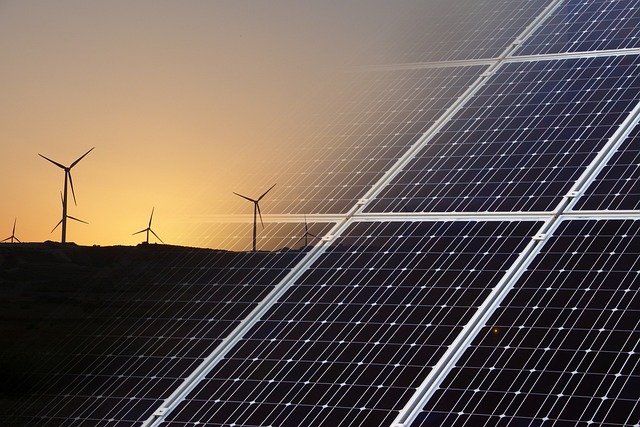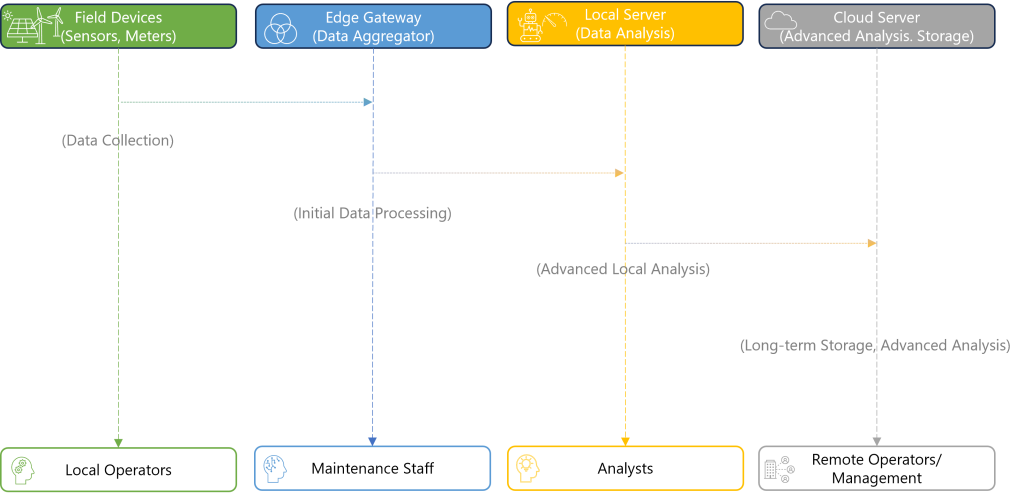In recent years, the renewable energy sector has experienced significant growth, and with that comes the need for real-time analytics to maximize efficiency and optimize energy production. Edge computing has emerged as a key technology in achieving this goal. This article explores how edge computing creates real-time analytics in the renewable energy sector.
Edge computing involves processing data near the source rather than sending it to a centralized location for analysis. This allows for faster decision-making and reduced latency. In monitoring and predicting performance issues, edge computing can analyze data from sensors and other devices in real-time, allowing for early detection of potential issues.
One example of how edge computing can be used in this context is in the manufacturing industry. By analyzing data from sensors on machines and equipment, edge computing can identify patterns and anomalies that may indicate potential performance issues. This information can then be used to schedule maintenance or repairs before a breakdown occurs, reducing downtime and improving overall efficiency.
Another example is in the transportation industry, where edge computing can be used to monitor the performance of vehicles in real time. By analyzing data from vehicle sensors, such as engine performance and fuel consumption, edge computing can identify potential issues before they become major problems. This can help prevent breakdowns, reduce maintenance costs, and improve safety and reliability.
In the renewable energy sector, edge computing can monitor and analyze data from sensors and devices in real-time. Renewable energy sources such as solar and wind power generate large amounts of data, which can be analyzed to optimize energy production. By processing this data at the edge, organizations can make real-time decisions that can improve the efficiency of energy production.
For example, edge computing can be used to monitor the performance of solar panels in real time. Organizations can optimize the performance of solar panels by analyzing data such as temperature, humidity, and irradiance levels. This optimization can lead to increased energy production and reduced maintenance costs.
Another example of how edge computing can provide value in the renewable energy sector is using predictive maintenance. Organizations can identify potential issues by analyzing data from sensors in real-time before they become major problems. This proactive approach to maintenance can reduce downtime and improve the reliability of renewable energy systems.
Example Architecture
Here’s a simplified example of how an edge-computing architecture for real-time, time-series data could work for Operations and Maintenance (O&M) scenarios.
Field Devices (Edge Level)
These are the IoT-enabled devices that collect the data. For a PV installation, this might include sensors measuring things like solar irradiance, ambient and panel temperature, wind speed, etc., as well as data from the inverters and possibly a smart meter. A weather station could also be used to collect local weather data.
Edge Gateway
The edge gateway serves as a local data aggregator and preprocessor. It collects data from all the field devices, performs initial processing and filtering, and then transmits the data to the next level. In some cases, the gateway can perform more advanced edge computing tasks, like running machine learning models for predictive maintenance.
Local Server/Edge Server
For some scenarios, especially those requiring near real-time analytics, you might have a local server or edge server that can do more extensive data processing and storage. This server could host a time-series database and run a local instance of an analytics platform (like Grafana or other proprietary software). This local server can perform more advanced data analysis tasks and provide visualizations and alerts for local operators.
Cloud Server
The cloud server provides long-term data storage and more advanced data analytics capabilities. It can run more complex machine learning models, analyze larger data sets, and provide a user-friendly remote monitoring and management interface. The cloud server could host a larger-scale time-series database, a data analysis platform, and possibly a machine learning platform.
User Interfaces
Local operators would typically interact with the system through a local Human-Machine Interface (HMI), which could be a part of the local server or a separate device. Remote operators and managers would interact with the system through a web-based interface hosted on the cloud server.
In this architecture, the edge computing components (the field devices, edge gateway, and local server) handle the immediate data collection and analysis tasks, providing real-time monitoring and control capabilities. The cloud server handles the larger-scale and longer-term data analysis tasks, allowing for more advanced analytics and remote management.
Overall, edge computing has the potential to revolutionize the way businesses monitor and predict performance issues. By analyzing real-time time-series data at the edge, businesses can make faster and more informed decisions, reducing downtime and improving efficiency.
About Citizen39
As a digital strategy consultancy, it is important to stay current on the latest trends and technologies and helping our clients leverage these tools to achieve their goals. The renewable energy sector is one of many areas where we have experience generating value from the great breadth of data our customers deal with. Call us to learn more about our approach to designing and executing a right data strategy for you.


Recent Comments